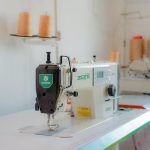Looking to elevate your projects with the perfect heat-sealable fabrics?
As you delve into the world of crafting and design, selecting the right fabrics is crucial. Whether you're creating custom apparel, accessories, or home decor, having a firm grasp on the best materials is essential for achieving professional results.
Understanding the properties of fabrics such as nylon, polyester, vinyl, polyurethane, and thermoplastic polyurethane (TPU) is the key to mastering the art of heat-sealing.
By identifying the best heat-sealable fabrics for your specific projects, you can take your creations to the next level. Let's explore the top options and their unique characteristics to ensure that your creations stand out with quality and durability.
Key Takeaways
- Nylon and Polyester are versatile and durable options for heat-sealing fabrics, known for their strength and ability to withstand wear and tear. They are suitable for projects that require resilience and longevity, making them ideal for outdoor gear, sportswear, and bags.
- Vinyl is a versatile material for heat-sealing projects that is highly resistant to abrasions, tears, and punctures. It is also resistant to moisture and mildew, enhancing its longevity. Vinyl provides an exceptional surface for vibrant and long-lasting prints, making it a popular choice for custom apparel, promotional items, and signage.
- Polyurethane is a versatile and durable option for heat-sealing projects. It is a flexible material that can bend and stretch without losing shape. Polyurethane is water-resistant, making it ideal for outdoor gear, and highly resistant to abrasion, suitable for applications involving wear and tear. It is commonly used in apparel, upholstery, and industrial applications.
- Thermoplastic Polyurethane (TPU) offers enhanced flexibility and adhesion properties compared to traditional polyurethane. It has diverse applications in technical textiles, medical devices, automotive interiors, and more. TPU is free from plasticizers, making it environmentally friendly. It also has superior tear strength and elasticity compared to PVC, and it is compatible with different production processes and can withstand extreme conditions.
Nylon
When you're heat-sealing fabrics, nylon stands out as a versatile and durable option. Its durability makes it a top choice for projects that require long-lasting materials. Nylon is known for its strength and ability to withstand wear and tear, making it an excellent choice for items that will be used frequently.
Additionally, nylon's breathability sets it apart from other fabrics. This quality allows for air circulation, making it comfortable to wear in various conditions. Whether you're creating outdoor gear, sportswear, or bags, nylon's breathability ensures that the items remain comfortable and wearable for extended periods.
Nylon's durability makes it suitable for projects that require resilience and longevity, such as backpacks, camping gear, or athletic wear. Its ability to withstand rough usage and exposure to the elements makes it a practical choice for outdoor and active gear. Furthermore, the fabric's breathability ensures that it remains comfortable even during rigorous physical activities.
This combination of durability and breathability makes nylon a go-to option for projects that demand high performance and reliability.
Polyester
Looking for a fabric that offers durability and breathability for your heat-sealable projects? Polyester might be the perfect choice. Polyester fabric is known for its exceptional properties that make it suitable for heat-sealing techniques. It is a synthetic fabric made from petroleum, and it is popular for its strength, wrinkle resistance, and easy-care nature. When it comes to heat-sealing, polyester's ability to withstand high temperatures and its low moisture absorbency make it an ideal option for various applications.
To further understand the advantages of using polyester for heat-sealable projects, take a look at the table below:
| Property | Description |
|---|---|
| Durability | Polyester is highly durable, making it suitable for projects that require long-lasting materials. |
| Breathability | Despite its durability, polyester is also breathable, allowing for comfort in wearables and other heat-sealed items. |
| Heat-Sealing Techniques | Polyester can be effectively heat-sealed using various methods, offering versatility in manufacturing processes. |
Polyester's fabric properties and compatibility with heat-sealing techniques make it a top choice for a wide range of projects. Whether you're creating outdoor gear, sportswear, or custom accessories, polyester's characteristics make it an excellent option for your heat-sealable fabric needs.
Vinyl
Vinyl is a versatile material for heat-sealing projects, offering a range of properties and applications. When it comes to durability, vinyl is an excellent choice. It's known for its resistance to abrasions, tears, and punctures, making it ideal for items that will be subject to heavy use or wear. Additionally, vinyl is highly resistant to moisture and mildew, enhancing its longevity and suitability for various applications.
In terms of printing techniques, vinyl provides an exceptional surface for vibrant and long-lasting prints. Heat transfer vinyl, for example, allows for intricate designs and detailed patterns to be transferred onto the material with precision and clarity. This makes vinyl a popular choice for custom apparel, promotional items, and signage. The versatility of vinyl printing techniques also enables the creation of multicolored designs and intricate graphics, adding to its appeal for a wide range of projects.
Polyurethane
For your heat-sealing projects, you'll find that polyurethane offers a versatile and durable option with a wide range of applications. When considering polyurethane for heat-sealable projects, its properties and applications make it an excellent choice:
- Properties of Polyurethane
- Flexibility: Polyurethane is highly flexible, making it suitable for projects that require material to bend and stretch without losing its shape or integrity.
- Water Resistance: Its water-resistant properties make it ideal for outdoor gear, such as rain jackets and tents, ensuring protection from the elements.
- Abrasion Resistance: Polyurethane is highly resistant to abrasion, making it a durable option for applications that involve frequent wear and tear.
- Applications of Polyurethane
- Apparel: From sportswear to outdoor clothing, polyurethane is used to create waterproof and breathable garments.
- Upholstery: Due to its flexibility and durability, polyurethane is commonly used for upholstery in furniture and automotive interiors.
- Industrial Uses: Polyurethane is utilized in industrial applications such as conveyor belts and seals, where durability and resistance to environmental factors are crucial.
Polyurethane's impressive properties and diverse applications make it an excellent choice for various heat-sealable projects.
Thermoplastic Polyurethane (Tpu)
When considering heat-sealable projects, you'll find that thermoplastic polyurethane (TPU) offers enhanced flexibility and adhesion properties compared to traditional polyurethane. TPU applications are diverse, ranging from technical textiles, medical devices, automotive interiors, footwear, and even inflatable rafts. The superior abrasion resistance and excellent elasticity make TPU an ideal choice for products requiring durability and flexibility.
In comparison to PVC, TPU exhibits several advantages. TPU is free from plasticizers, making it a more environmentally friendly option. It also offers better resistance to oils and chemicals, ensuring longevity in various environments. Additionally, TPU provides superior tear strength and elasticity, making it suitable for applications that require high-performance materials.
For heat-sealable projects, TPU's ability to bond to various substrates, including fabrics and films, makes it a versatile material. Its compatibility with different production processes and its ability to withstand extreme conditions further enhance its appeal. Whether you're creating outdoor gear, performance apparel, or medical products, TPU's exceptional properties make it a top choice for heat-sealable fabric projects.
Frequently Asked Questions
What Are the Specific Heat-Sealing Temperatures and Pressures for Each of These Fabrics?
To achieve the best results, you'll need to match specific temperature and pressure settings with the fabric type. Consider fabric compatibility, heat sealing equipment, adhesive options, environmental impact, and health concerns when determining these settings.
Are There Any Special Considerations or Techniques for Heat-Sealing These Fabrics With Intricate or Delicate Designs?
When heat sealing intricate designs, delicate fabric considerations are crucial. Varying heat sealing temperatures and special equipment requirements may be necessary. Ensuring precision and care in the process is essential for successful results.
Can These Fabrics Be Heat-Sealed With Standard Household Irons, or Do They Require Special Heat-Sealing Equipment?
Yes, household irons can heat-seal these fabrics. However, alternative methods like DIY heat sealing may be needed for intricate or delicate designs. Consider creative applications and ensure proper technique for best results.
Are There Any Specific Types of Heat-Sealable Adhesives or Tapes That Are Recommended for Use With These Fabrics?
For heat-sealable fabrics, heat-sealable adhesives and recommended tapes are essential. They ensure secure bonding without compromising fabric durability. In the textile industry, heat sealing is a standard method, offering alternatives for traditional sewing techniques.
Are There Any Environmental or Health Considerations to Be Aware of When Heat-Sealing These Fabrics, Such as the Release of Harmful Fumes or Chemicals?
Consider the environmental impact and health concerns when heat-sealing fabrics. Some fabrics may release harmful fumes or chemicals when heated, so ensure proper ventilation and use protective equipment. Prioritize safety and eco-friendly practices.
- How Does Ring Spun Cotton Affect Garment Fit and Shape Retention? - August 13, 2024
- What Are the Challenges in Producing Ring Spun Cotton? - August 13, 2024
- Is Ring Spun Cotton Suitable for Plus-Size Clothing? - August 13, 2024







